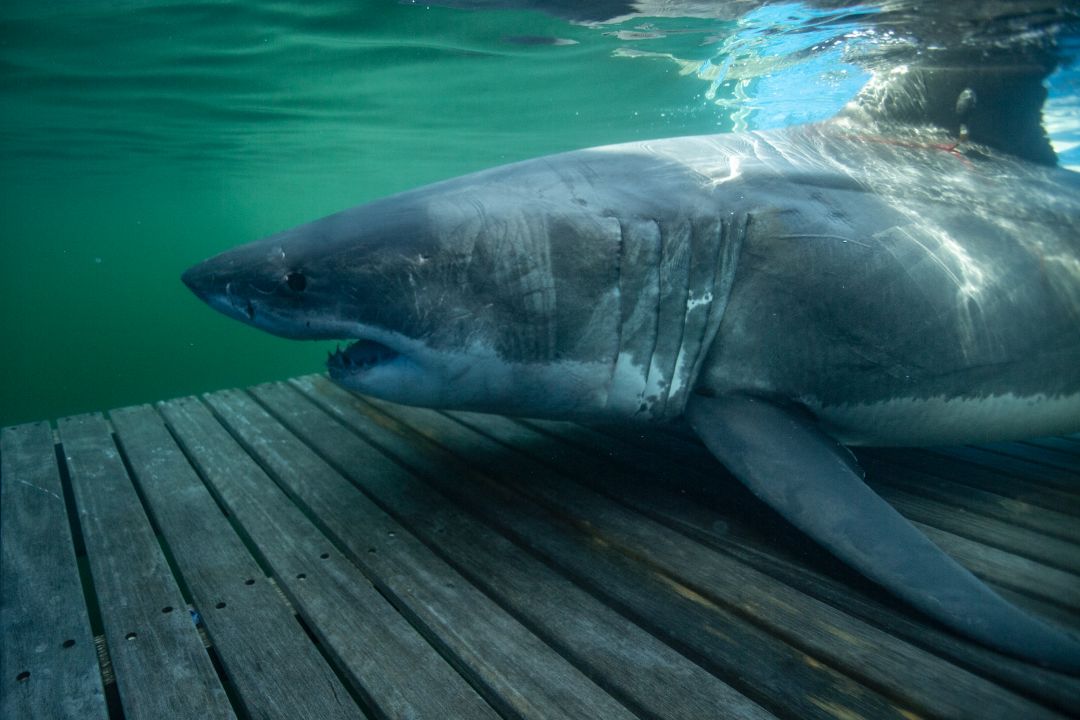North Atlantic White Shark Makes Her Way to the Gulf Coast

Unama’ki the North Atlantic white shark. Her name means "land of the fog."
Image: Courtesy Photo
She started her journey in Nova Scotia and has traveled more than 2,000 miles south. Now Unama’ki, a tagged North Atlantic white shark, has made her way into Gulf waters.
Dr. Robert Hueter, chief science advisor for OCEARCH, senior scientist and director of the Center for Shark Research at Mote Marine Laboratory, helped tag Unama'ki, recorded her length and weight (15.5 feet and over 2,000 pounds), and is following her changing location.
Unama’ki’s name is derived from the Mi’kmaq language, which is indigenous to Nova Scotia, as well as other parts of Canada and the United States. In English, it translates to "land of the fog." Unama’ki was caught, examined, tagged and released on and OCEARCH mission Sept. 20 at Scatarie Island, located at the northeast tip of Cape Breton of Nova Scotia. Since then, her location has been continuously documented, and when she nears the water’s surface for an extended period of time, her tracker sends out a ping with her current coordinates.
“White sharks tend to stay in the outer part of the ocean's shelf. The closest one that has come to shore was 50 miles out; they don’t hug the coasts,” Hueter explains. Unama’ki’s most recent ping was on Oct. 28, about 170 miles off Marco Island, around the continental slope.
Swimming from north to south and winding up in The Gulf is not unusual for sharks. The journey is often driven by food and water temperature. North Atlantic white sharks are warm blooded, and can withstand relatively cold temperatures, favoring water in the low 60s. As winter approaches, northern water becomes colder and sharks' prey travel south for warmth. Although North Atlantic white sharks are not a tropical species, they do follow their food sources, making for a collective food chain migration.
Follow Unama’ki’s journey here.